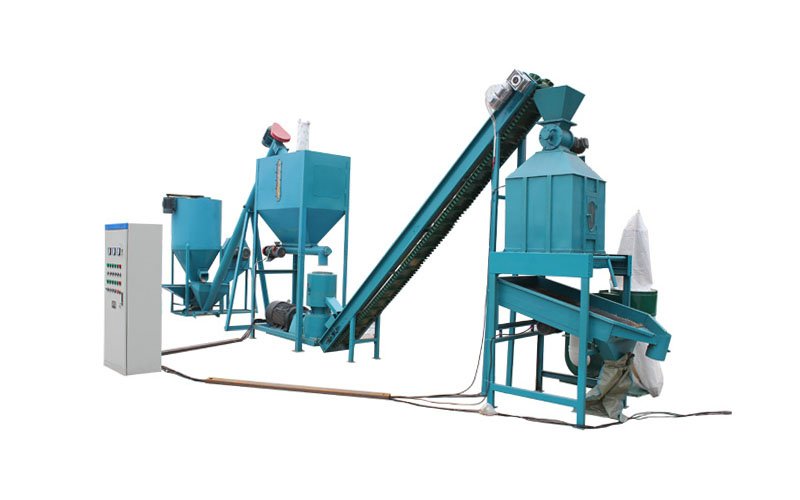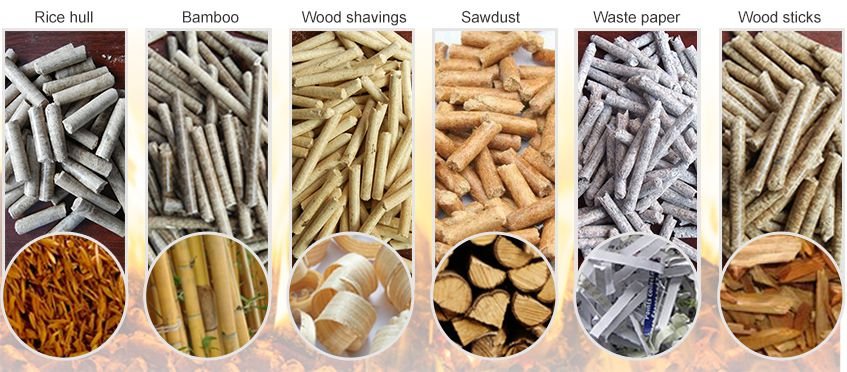pelleting machine price in nigeria ,animal feed pellet machine
Why You Need an Animal Feed Pellet Production Line?
May 6, 2025
Why You Need an Animal Feed Pellet Production Line?
For all farm animals—including poultry and aquaculture—good feed is the most important factor for survival, proper growth, and productivity. Since the main goal of raising farm animals is to make profit, they must be given the best quality feed. However, even when regular animal feeds (such as mash, fines, and roughages) contain enough nutrients, animals still perform poorly. The reason? These feeds are not pelleted!

What Are Animal Feed Pellets?
Animal feed pellets are small, smooth particles made from feed ingredients. The size varies depending on the type and size of the animals.
Advantages of Animal Feed Pellets
-
Improved Feed Consumption
- Animals find pellets easier to eat, leading to better growth, performance, and productivity.
-
Reduced Feed Wastage
- Mash and fines often get wasted because animals struggle to eat them completely, leaving behind dust. This is a big problem, especially for poultry.
-
Destruction of Harmful Organisms
- During pellet processing, heat kills harmful bacteria and parasites that could harm animals. This does not happen with other feed forms.
-
Increased Appetite & Less Selective Feeding
- Animals eat pellets more easily because they are uniform in texture. They also cannot pick and choose ingredients, ensuring balanced nutrition.
-
Reduced Dust & Respiratory Diseases
- Mash and fines create dust, which can cause respiratory problems in animals like rabbits. Pellets eliminate this risk.
-
Easy Packaging, Transport & Storage
- Pellets are compact, making them easier to package, stack, and transport compared to loose feed.

Animal Feed Pellet Production Line Process
Over the years, feed pellet production has evolved from slow, manual methods to fully automated production lines. The process involves three key steps:
1. Sourcing the Right Ingredients
The first step is selecting high-quality ingredients based on the type of feed needed, such as:
- Piglet feed
- Poultry feed
- Sow feed
- Layer & broiler feed
- Salmonella-free feed
2. Using Safe Additives to Improve Pellet Quality
To enhance pellet durability and nutrition, certain additives are used:
- Binders (Lignin-based, Hemi-cellulose, Mineral, or Specialty binders like gums & starches) – Prevent pellet breakage.
- Lubricants & Fats – Prevent choking in animals.
- Emulsifiers – Control moisture and help pellets float in aquaculture feed.
3. Processing with the Right Machines
A complete pellet production line includes: ✔ Screw Feeder – Moves raw materials into the system. ✔ Vertical Spout – Transfers materials efficiently. ✔ Feed Pellet Mill – Forms pellets under high pressure. ✔ Meal Bucket Elevator – Lifts pellets for cooling. ✔ Cooler – Reduces pellet temperature and moisture. ✔ Automatic Packager & Scale – Weighs and packs pellets for sale.
Conclusion
Animal feed pellets are not just a trend—they are the future of livestock farming. The benefits far outweigh the costs, making it a smart investment for farmers and feed producers.
Ready to start your own feed pellet production line? 📞 Contact MAIKONG today! WS/TEL: 0086191-549010-65
With the right equipment and knowledge, you can produce high-quality, profitable feed pellets for Nigeria’s growing livestock industry. Don’t wait—set up your production line now! 🚀
Contact us online by Whatsapp:

